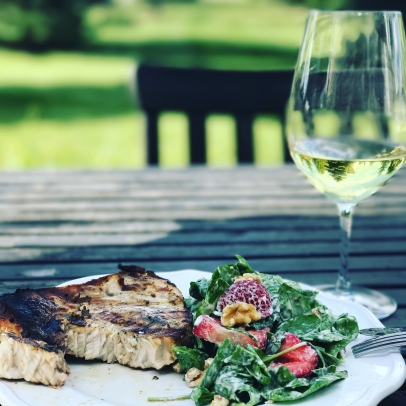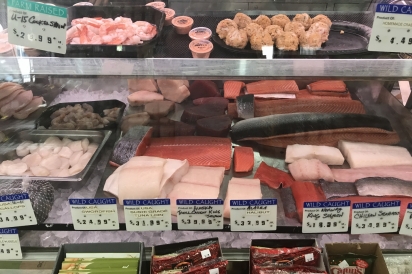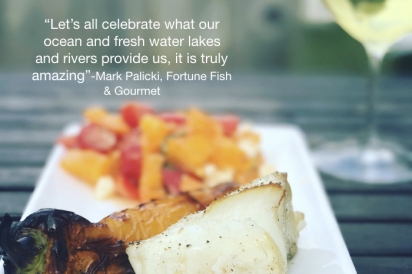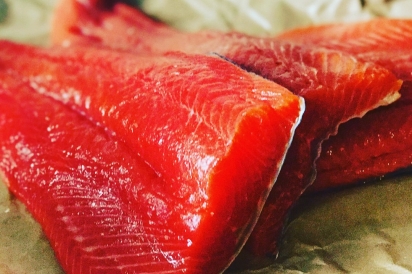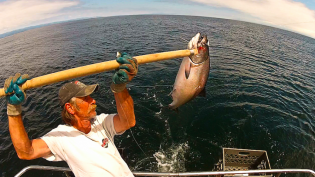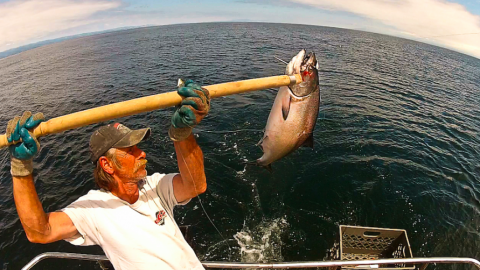Americans Need to Eat More Fish
The word “sustainable” is the latest buzzword in the food industry—be it for seafood or something else. Yet, its implications are much more than simply a trend. When talking about sustainable seafood, it’s important to understand the terminology refers to more than just the species: the geographical region from where the fish comes from and the way it’s caught or farmed are equally important. Many consumers believe any seafood that’s not endangered is OK to eat … and that it is, therefore sustainable because the future of the species isn’t in danger, theoretically at least. But that simply isn’t the case.
To help decipher the sustainable seafood world, I talked with Vice President of Marketing for Fortune Fish & Gourmet, Mark Palicki, and Joe Lazzara, owner of Joe’s Butcher Shop and Fish Market.
SHAUNA NOSLER: For people like you and I who live and breathe sustainable fishing, we know why it’s important to choose sustainable fish for our plates. But what about everyone else? Do you think the rest of America is catching (no pun intended) on?
MARK PALICKI: There’s a lot of confusion in the marketplace on what is sustainable or what we should or shouldn’t purchase. With everything in the media and a lot of misinformation, food right now in general is difficult to navigate. Something that is “bad” to eat gets negative press, but often the item gets fixed and is no longer on the “bad” list. When this happens, it’s very hard to change the negative perception. Unfortunately, we face this everyday with seafood items. For example, if a fishery was struggling and a management plan was put in place to help it recover, should we stop buying that fish? I don’t think so, if we don’t purchase the fish we are not supporting the plan or the people trying to make a living while following the plan.
JOE LAZZARA: As little as 12-years ago there were a string of articles correctly criticizing farm-raised seafood. The concerns ranged from the poor health of the fish and their diet to how the wastewater was being used post-raise. Since that time farm-raised fish has come a long way.
There are 20 to 30 cutting edge aquaculture farmers that employ sustainable methods: They raise fish in open water pens that are not crowded, monitor for parasites and disease, and use feed made from the same ingredients the fish would eat in the wild. The product they deliver is of the highest quality and has great natural flavor. And though their pricing is below fresh wild-caught fish it is well above traditional farm-raised seafood. Since the production quantities of this type of fish are limited the producers only sell through select seafood distributors. Wild-caught fish is still generally a safe and very desirable product, but it too has pitfalls ranging from natural parasites to where and how the fish was caught.
SN: Fortune Fish is dedicated to supplying sustainable seafood to its customers. What are some of the ways the company ensures the fish and shellfish you provide are indeed, sustainable options?
MP: We work with the Sustainable Fisheries Partnership, a non-profit organization, that helped us develop our Sustainable Seafood Policy. We also work closely with our customers and their individual sustainability goals to make sure they hit them.
We are also a founding member of Sea Pact which is a group of likeminded companies dedicated to driving stewardship and continuous improvement of social, economic and environmental responsibility throughout the global seafood chain. We provide funding to fishery and aquaculture projects around the world to improve the global seafood supply chain.
SN: Joe, you’re committed to supplying sustainable seafood to consumers. Is this one of the reasons you partner with Fortune Fish?
JL: Absolutely. Fortune Fish realized years ago that discriminating chefs at award-winning restaurants wanted the freshest and most sustainable seafood choices. The high-end restaurant industry with the advent of food focused TV programming such as Food Network serve a well-educated base of consumers that expect their dining experience to be delicious and healthy too. Being based in Chicago, Fortune has the best of many conditions for buying and moving sustainable high-quality fish. They are literally located at O'Hare where daily flights of fresh seafood arrive in ice baths from around the globe. The Chicago restaurant scene is highly developed with great chefs that expect only the best. Fortune does only a few select retail accounts and they are very discriminating in a retailer’s ability to represent their fish in an honest and fresh manner. Also, Fortune Fish is only a three-hour drive from our store, guaranteeing that fish brought in to Chicago that day arrives at Joe's the next day.
SN: How can people find out if what they’re purchasing is sustainable?
MP: Talk to the person selling it and listen with an open mind, don’t go by what you are reading on the internet or heard in the past. A lot of the information is old or just not accurate. There is a story with every seafood product and we should all be telling it. I would also say if it looks and sounds really good in person or on a menu, order it.
SN: There are lots of retail establishments, grocery stores and specialty food stores alike, that sell seafood. What are some of the reasons people should shop at Joe’s?
JL: Nothing in our case is ever kept more than 72 hours, usually less than 48 hours.
We purchase only sustainably caught, inspected wild-caught fish. The vast majority of our wild-caught fish is cut daily—we get fresh deliveries every day but Sunday—from whole fish. With the exception of our wild-caught shrimp, all our fish is truly fresh and never frozen before its offered for sale in our fresh case.
SN: Any thoughts on how to get people to eat more seafood?
MP: I know this goes against everything you are writing in this article, but I would say forget about sustainability and what is on the “good” or “bad” list. Seafood is intimidating for many people. There are a ton of different species that all look different and taste different and most people are uncomfortable cooking seafood at home. If you add all the sustainability rules to that intimidation you just get mass confusion and they go and buy a chicken breast or some ground beef. We don’t eat enough seafood and honestly, we would all be a lot healthier if we ate more, so choose seafood at least twice a week, it is good for you. Let’s all celebrate what our ocean and fresh water lakes and rivers provide us, it is truly amazing.
Joe’s 3 tips for eating more seafood
Season your fish as little as possible—salt and lemon, or salt and pepper. It's easier to figure out which flavor profile you prefer—rich and fatty, moist and flakey, or a clean sea-brine flavor—with a clean preparation versus using heavy sauces and seasonings.
Keep your cooking methods simple and use lower temperatures. A simple pan sauté, bake, or grill with a little butter or olive oil is best. High temperatures can dry out your fish and are the main cause of making your home smell fishy as the oils in fish tend to change chemically under high heat and release the typical fish smell many find unappealing. Keep your heat low and monitor your fish for doneness by flaking it with a fork.
When you find out what fish and flavor profile you enjoy, then it's time to use that cleanly prepared seafood in recipes you might already be using. Fish tacos are excellent any day of the week, and stews and soups with seafood are outstanding.
BOTTOM LINE … “America,” says Palicki, “needs to eat more seafood, the average American only eats a little over 15-pounds per year. So, instead of trying to navigate the sustainability of fish for your plate, just choose fish and celebrate the amazing product that is on your plate.”
QUESTIONS: Shoot me an email. And if you want to read more about sustainable seafood, the fishing industry or just about anything related to our oceans, rivers and streams, visit TheMidwestMermaid.blog | @shaunanosler | snosler@gmail.com
Fortune Fish & Gourmet is the Midwest's premier fresh and frozen seafood processor and specialty food distributor servicing fine restaurants, hotels, country clubs and grocers throughout the region
Joe’s Butcher Shop and Fish Market is a Carmel-based specialty retailer offering the finest selection of farm fresh beef, veal, lamb, pork, homemade sausages, chicken, and the area’s freshest and highest quality seafood.


